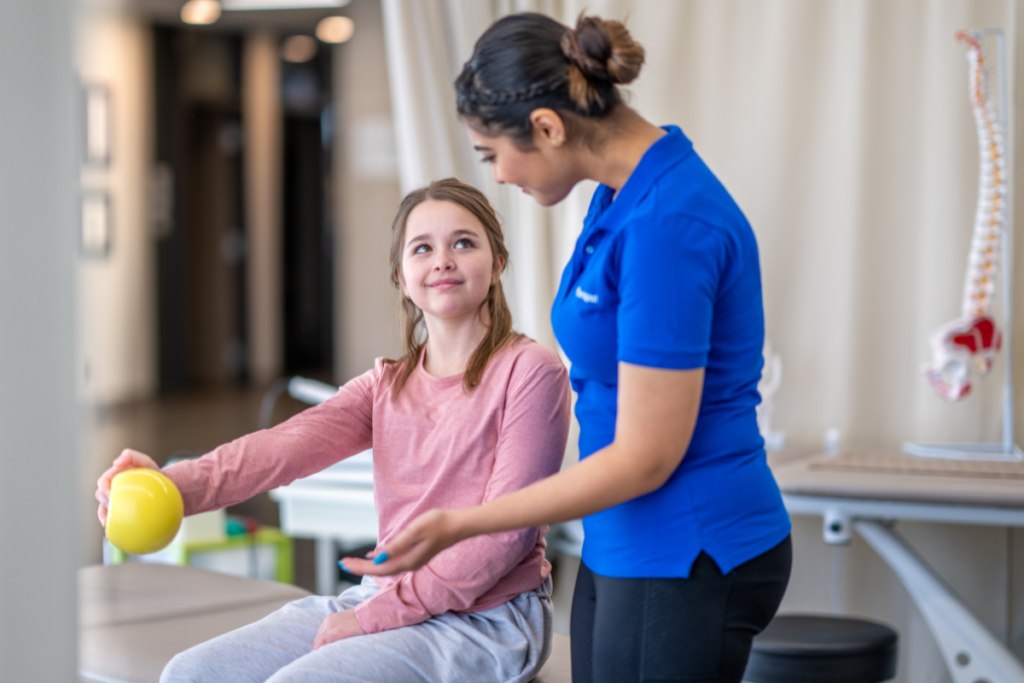In the journey of childhood development, mobility plays a pivotal role. From the moment a baby takes their first steps to the time they become independent movers, mobility shapes their physical, cognitive, and emotional growth. However, in today’s increasingly sedentary world, ensuring optimal mobility for children has become more challenging than ever. Understanding the significance of pediatric mobility and discovering effective ways to enhance it is crucial for parents, caregivers, and healthcare professionals alike. This blog delves into the importance of pediatric mobility and provides actionable insights on how to nurture and improve it. From fostering early movement milestones to addressing mobility barriers, we’ll explore a range of strategies that promote healthy development in children. By prioritizing mobility from infancy through adolescence, we can empower children to explore their world, build confidence, and lay the foundation for a lifetime of physical well-being. Join us on this journey to unlock the full potential of pediatric mobility.
Creating Accessible Environments for Children with Mobility Impairments
Ensuring accessibility is not just a matter of convenience; it’s a fundamental right. For children with mobility impairments, accessibility can significantly impact their ability to navigate the world independently and participate fully in various activities. In this article, we’ll delve into the importance of creating accessible environments for these children and explore practical strategies for making homes, schools, and public spaces inclusive and welcoming.

Designing Accessible Homes
Home should be a place of comfort and safety for children with mobility impairments. Designing an accessible home involves considerations such as wheelchair ramps, wide doorways, and accessible bathroom and kitchen features. Simple modifications like installing grab bars or lowering countertops can make a significant difference in accessibility and independence.
Creating Inclusive Schools
Schools play a crucial role in children’s development, and it’s essential that they are accessible to all students. This includes not only physical accessibility but also ensuring that educational materials and activities are inclusive and accommodating of diverse needs. From accessible classrooms to inclusive playgrounds, schools should be welcoming environments where every child can thrive.
Promoting Accessibility in Public Spaces
Public spaces should be for everyone, regardless of mobility limitations. This means ensuring that sidewalks, parks, and recreational facilities are wheelchair accessible and free from obstacles. Additionally, public buildings such as libraries, museums, and community centers should be designed with accessibility in mind, allowing all children to participate in community activities and events.
Educating the Community
Creating accessible environments requires more than just physical modifications; it also involves fostering a culture of inclusion and understanding within the community. By raising awareness about the needs of children with mobility impairments and promoting empathy and acceptance, we can create a more inclusive society where everyone feels valued and respected.
Empowering Children and Caregivers
Empowering children with mobility impairments and their caregivers is essential for promoting independence and self-confidence. This may involve providing resources and support services, advocating for their needs, and encouraging them to participate fully in decision-making processes related to accessibility.
Nutrition and Pediatric Mobility
Nutrition plays a pivotal role in pediatric development, influencing not only growth but also mobility. In this article, we’ll explore the significant impact of nutrition on children’s mobility and offer key insights into promoting optimal mobility through dietary choices.
- Essential Nutrients for Mobility: Highlight the importance of nutrients such as calcium, vitamin D, protein, and omega-3 fatty acids in supporting bone and muscle health, essential for maintaining mobility and preventing musculoskeletal issues.
- Balanced Diet and Muscle Development: Emphasize the role of a balanced diet rich in fruits, vegetables, lean proteins, and whole grains in supporting healthy muscle development, providing the necessary energy and nutrients for active play and movement.
- Hydration and Joint Health: Discuss the importance of hydration in maintaining joint health and lubrication, reducing the risk of stiffness or discomfort that may impede mobility. Encourage adequate water intake throughout the day.
- Impact of Obesity on Mobility: Address the negative impact of obesity on pediatric mobility, highlighting the importance of promoting healthy eating habits and maintaining a healthy weight to reduce strain on joints and support optimal movement.
Empowering Parents as Advocates for Pediatric Mobility
As parents, we play a crucial role in advocating for our children’s health and well-being. When it comes to pediatric mobility, parents can be powerful advocates, ensuring that their child receives the support and resources needed to thrive. In this article, we’ll explore the importance of empowering parents as advocates for pediatric mobility and provide practical guidance on how they can effectively advocate for their child’s mobility needs.
Building a Support Network
Empowerment often comes from strength in numbers. Building a strong support network of healthcare professionals, therapists, educators, and other parents of children with similar mobility challenges can provide invaluable guidance, resources, and emotional support throughout the advocacy journey.
Educating Yourself
Knowledge is power. Take the time to educate yourself about pediatric mobility issues, including available treatments, therapies, assistive devices, and rights and entitlements. Understanding the options and resources available empowers you to make informed decisions and advocate effectively for your child.
Communicating Effectively with Healthcare Professionals
Open and proactive communication with healthcare professionals is key to advocating for your child’s mobility needs. Be prepared to ask questions, share concerns, and actively participate in treatment planning discussions. Establishing a collaborative relationship with your child’s healthcare team ensures that their needs are accurately understood and addressed.
Navigating Healthcare Systems
Navigating complex healthcare systems can be daunting, but it’s essential for advocating for your child’s mobility needs. Familiarize yourself with insurance coverage, referral processes, and available support services. Be persistent and assertive in seeking out the resources and services your child requires.
Accessing Support Services
Many support services and resources are available to children with mobility challenges and their families, but accessing them can sometimes be challenging. Whether it’s early intervention programs, physical therapy services, or assistive technology resources, be proactive in seeking out and accessing the support services that can benefit your child.
Conclusion
Prioritizing pediatric mobility is paramount for ensuring healthy development and a fulfilling childhood. Through proactive measures such as regular physical activity, ergonomic adjustments, and professional guidance, children can overcome mobility challenges and thrive in their daily activities. By fostering a supportive environment that promotes movement and accessibility, caregivers and healthcare professionals alike can contribute to the well-being and happiness of our youngest generation.
For further information on enhancing pediatric mobility or to schedule a consultation with our experienced team at Physiohome, located in Ras Al Khaimah, United Arab Emirates, please don’t hesitate to reach out to us at +971 52 730 9683. We’re dedicated to empowering children to move freely and live life to the fullest.

